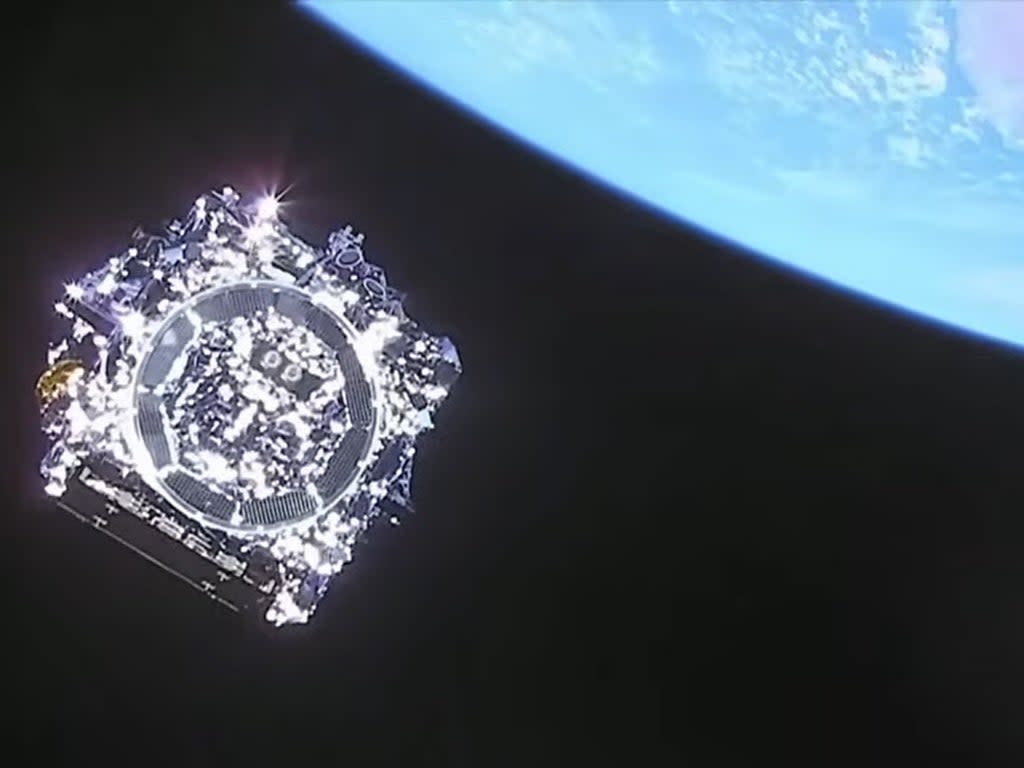James Webb Space Telescope: What’s next for the alien hunter and when will it send first photos of the stars?

Nasa’s James Webb Space Telescope is now safely launched, but there is still much to be done before it glimpses into the past at the first moments of creation.
The telescope, which is the largest of its kind, was propelled from South America on 25 December with the aim of scanning the cosmos for the elusive remnants of the 13.7-billion-year-old stars and galaxies formed from the Big Bang.
In the aftermath of the launch, the telescope had to unfold its sunshield to shade its enormous 6.5-metre mirror, followed by the mirror itself to capture as much light as possible.
Webb should reach its destination of 1 million miles (1.6 million kilometres) from our planet in approximately another two weeks, but between now and then are a number of other tasks that need to go off without a hitch for the $10 billion telescope.
Tomorrow, the primary mirror wings – which are now fully deployed - will need to be adjusted over a series of days so that each of the 18 mirror segments are moved out of their launch configuration and aligned properly.
This is the start of a three-month process, which will coincide with its instruments coming online as they cool to sub-zero temperatures, but the mirrors should be aligned within 10 days.
Then follows a planned course-correction burn, setting the telescope on a direct path around the second Sun-Earth Lagrange Point. These are positions in space where the gravitational forces of two bodies – in this case the Sun and our own planet – produce strong attraction and repulsion.
The Langrance Point 2 (of which there are five in total) is hope to the WMAP spacecraft and the Planck satellite and is an ideal spot for astronomers because a craft can communicate with Earth while also taking in solar power.
However, reaching that stage is a challenge; if the telescope the Ariane 5 rocket that was used to launch it, it would not be able to turn around to thrust back toward Earth because that would directly expose its telescope optics and structure to the Sun – overheating them and aborting the project.
To compensate for this, Webb has to receive a slight under-burn from Ariane and use its own small thrusters and on-board propellant to delicately adjust itself.
Finally, once that has been completed, Webb will be in orbit. It will take several weeks for the instruments to cool down to a temperature where they can safely operate, ahead of five months of aligning the optics and calibrating the scientific instruments.
It is expected that full alignment could be completed 120 days after launch – approximately on 24 April – depending on how smoothly the procedure go. Webb will then send back a series of “wow images”, as described by Jane Rigby, Webb operations project scientist at Goddard, to both showcase and test the telescope’s capabilities.
These pictures, while not yet decided, will include stars – to check that the telescope is aligned properly – and a shot of the Large Magellanic Cloud, a satellite galaxy around the Milky Way, that will prove the telescope’s ability to deal with various shades of bright light.
Happily, Webb is likely to continue running for twice its estimated lifespan due to the extra fuel kept on the telescope – remaining there because of the efficient performance of the Ariane rocket. It is now expected that Webb will run for 20 years, rather than the ten predicted by Nasa.

